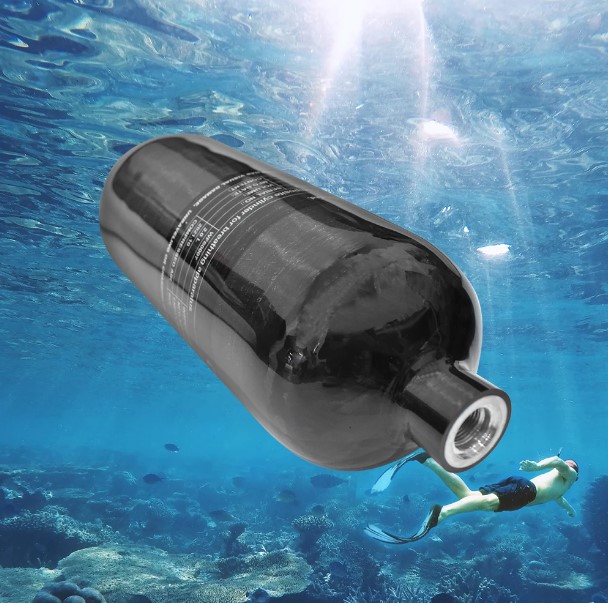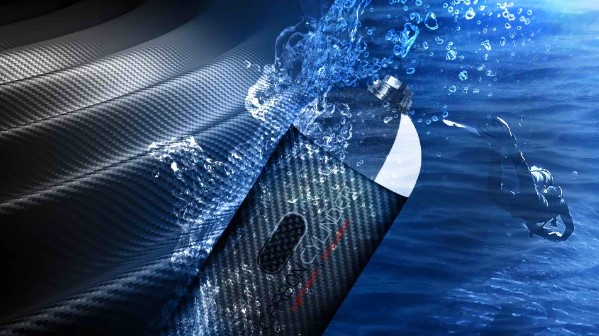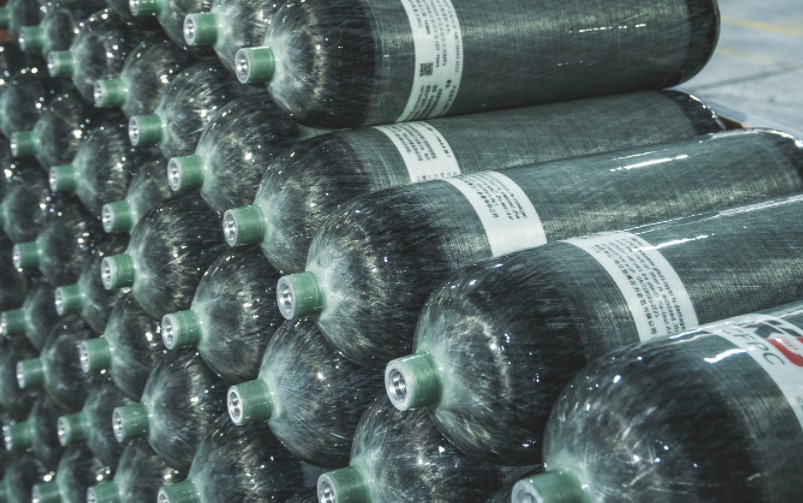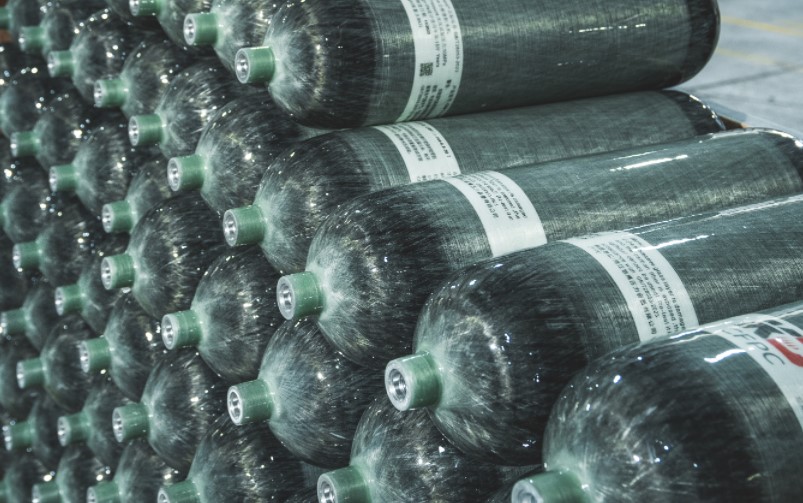Underwater vehicles, ranging from small, remotely operated vehicles (ROVs) to large autonomous underwater vehicles (AUVs), are used extensively for scientific research, defense, exploration, and commercial purposes. A critical component of these vehicles is the buoyancy chamber, which helps control the vehicle’s depth and stability underwater. Traditionally made of metals, buoyancy chambers are now frequently built with carbon fiber composite tanks, which offer numerous advantages in strength, durability, and weight reduction. In this article, we’ll explore how carbon fiber tanks function as buoyancy chambers and why they’re increasingly being integrated into underwater vehicle designs.
Understanding the Role of Buoyancy Chambers
A buoyancy chamber allows an underwater vehicle to control its position in the water column by adjusting its overall density. The tank can be filled with gases to adjust buoyancy, helping the vehicle ascend, descend, or maintain a steady position underwater. In the case of carbon fiber tanks, they are generally filled with air or another gas, providing the necessary flotation.
This controlled buoyancy is critical for stability, energy efficiency, and precise positioning of the vehicle, especially during tasks like surveying the ocean floor, conducting scientific measurements, or capturing high-resolution imagery.
Advantages of Using Carbon Fiber Tanks for Buoyancy
Carbon fiber composite tanks are a valuable upgrade from traditional metal tanks for several key reasons:
- Reduced Weight: Carbon fiber tanks are significantly lighter than metal tanks, which is a crucial advantage in underwater applications. The reduced weight minimizes the overall mass of the vehicle, making it easier to control and more fuel-efficient.
- High Strength-to-Weight Ratio: Carbon fiber is incredibly strong relative to its weight, providing a robust solution that can withstand the high pressures of underwater environments without adding unnecessary bulk.
- Corrosion Resistance: In saltwater environments, corrosion is a constant concern. Unlike metals, carbon fiber is inherently resistant to corrosion, which makes it ideal for prolonged exposure to marine conditions and reduces the need for frequent maintenance.
- Enhanced Pressure Tolerance: Carbon fiber tanks are engineered to handle substantial pressure, making them suitable for deep-sea applications. This structural integrity is essential for buoyancy chambers, as they must maintain gas containment and buoyancy control even at great depths.
How Carbon Fiber Tanks Function as Buoyancy Chambers
The working principle behind buoyancy control with carbon fiber tanks is straightforward yet effective. Here’s a breakdown of the process:
- Gas Containment: Carbon fiber tanks are filled with gas (typically air, nitrogen, or helium) which creates buoyancy. The amount of gas can be adjusted, allowing for precise buoyancy adjustments to match the desired depth.
- Depth Adjustment: When the vehicle needs to ascend, the amount of gas within the buoyancy chamber is increased, reducing the vehicle’s overall density. Conversely, to descend, the vehicle either vents some gas or takes on more water, which increases density and enables a downward movement.
- Stability Maintenance: Many underwater tasks require a steady position. Carbon fiber tanks provide a way to maintain neutral buoyancy, which is especially beneficial for scientific equipment that needs to hover at a particular depth.
- Handling Water Pressure: At greater depths, the external water pressure increases. Carbon fiber composite tanks are designed to withstand these pressures without risk of implosion or material fatigue. The tank walls and structure are precisely engineered to maintain integrity, allowing the vehicle to operate safely in deep-sea environments.
Key Use Cases for Carbon Fiber Tanks in Underwater Applications
- Marine Research Vehicles: For scientific studies that involve deep-sea exploration, carbon fiber tanks enable ROVs and AUVs to reach greater depths and maintain stable buoyancy, allowing for prolonged study and data collection in remote ocean areas.
- Underwater Inspection and Maintenance: In offshore industries like oil and gas, underwater vehicles equipped with carbon fiber buoyancy tanks are used for structural inspection and maintenance. The lightweight, corrosion-resistant nature of carbon fiber makes it ideal for prolonged operations around submerged oil rigs and pipelines.
- Military and Defense Operations: Carbon fiber tanks are increasingly used in military underwater vehicles for reconnaissance and surveillance. Their durability, coupled with weight savings, allows for quieter and more agile movement, which is valuable in stealth operations.
- Salvage Operations: For recovering underwater objects, buoyancy control is essential. Carbon fiber buoyancy tanks allow salvage vehicles to adjust their buoyancy precisely to raise objects from the seafloor, enabling smoother and safer operations.
Engineering and Design Considerations for Carbon Fiber Buoyancy Tanks
In designing carbon fiber tanks for buoyancy, engineers consider factors like the material’s strength, thickness, and liner compatibility. Carbon fiber itself is strong, but the specific resin and manufacturing process are equally important to ensure resistance to water absorption and environmental pressures.
Liner Material
Carbon fiber tanks often incorporate a liner, typically made from polymer or metal, to enhance gas retention and maintain impermeability. The liner’s material is selected based on the type of gas used and the operating depth, ensuring that the tank remains effective in holding gas for buoyancy.
Testing and Validation
Given the extreme demands of underwater use, carbon fiber buoyancy tanks undergo rigorous testing for pressure tolerance, fatigue resistance, and long-term performance. Pressure testing ensures the tanks can withstand rapid changes in depth and avoid material fatigue.
Safety Precautions
Despite the durability of carbon fiber, any buoyancy tank intended for underwater use must meet strict safety standards. Pressure overloads can still pose risks, so operational limits and regular inspections are crucial to maintaining safe function.
The Future of Carbon Fiber Tanks in Marine Applications
As materials technology advances, carbon fiber tanks are becoming even more efficient, durable, and cost-effective. Innovations in resin chemistry, manufacturing techniques, and design modeling have enabled even more precise and reliable tank production. These advancements allow for deeper, longer, and safer underwater missions, pushing the limits of what ROVs and AUVs can achieve.
In the future, we can expect carbon fiber tanks to become even more integral in marine exploration and technology, particularly as autonomous underwater vehicles become more prominent in fields like environmental monitoring, oceanography, and offshore energy.
Conclusion
Carbon fiber composite tanks have proven themselves as essential tools for buoyancy control in underwater vehicles. Their combination of lightweight design, corrosion resistance, and high pressure tolerance makes them perfectly suited for the unique challenges of marine environments. Whether for scientific research, military operations, or commercial applications, these tanks provide reliable buoyancy control that enhances the effectiveness and safety of underwater vehicles. With ongoing innovations, carbon fiber tanks will continue to shape the future of marine technology, making deep-sea exploration and underwater operations more accessible and effective than ever before.
Post time: Nov-05-2024




